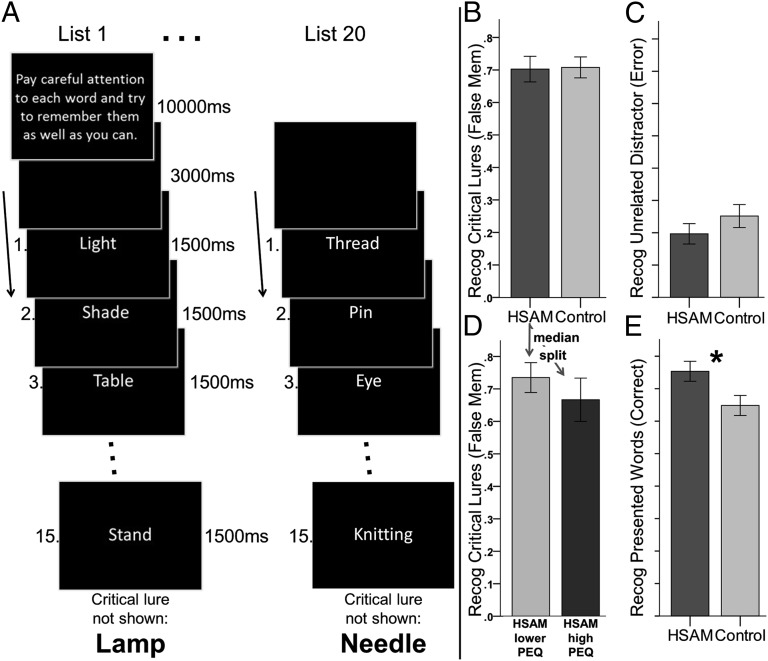Fig. 1.
The DRM false-memory associative word list: a sample of materials and the main results. (A) The materials consisted of 20 lists, each 15 words long. Each word in a given list is related to a critical lure that the participants never actually saw. (B) The main result showed both HSAM individuals and controls falsely recognized a similarly high proportion of critical lures (MHSAM = 14.1; MControl = 14.2 of 20). The y axis indicates the mean proportion. (C) Both groups indicated seeing unrelated distractor words at the same proportion as one another, far less often than they endorsed seeing the critical lure words. (D) HSAM participants with the highest autobiographical memory ability (highest scores on the PEQ) were not significantly less susceptible to falsely endorsing critical lure words than HSAM participants who performed in the low range. (E) HSAM individuals outperformed controls on correctly recognized items that were presented earlier (hit rate), *P = 0.035. Error bars represent SEs.

